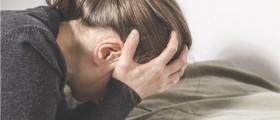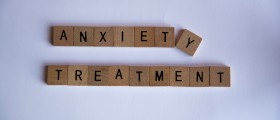
Anxiety is a psychological state characterized by many physiological, Somatic, emotional, cognitive and behavioral disturbances. Anxiety is best described by the feelings of fear, nervousness, uneasiness or even dread. The feeling of anxiety is very disabling, and sometimes it occurs without any obvious reason. People often feel worry or fear before confronting some challenging life situations, such as a test, a job interview or an examination. Anxiety can occur anytime when a reaction is out of proportion with what might be normally anticipated in circumstances. The person may feel stressed because of the unknown, deeply buried, repressed cause. When it becomes excessive, it may be classified as an anxiety disorder, which is characterized by different forms of abnormal and pathological fear.
Symptoms of anxiety
Anxiety is a mood condition that often occurs without any identifiable stimulus. For this reason, it is distinguished from fear, which is a response to a known threat. Anxiety is often focused on some kind of a future or expected bad event, and tremble upon the possible bad things that can happen. Symptoms of anxiety often include rapid heartbeat, weakness and tension in the muscles, sudden fatigue, nausea and chest pain, shortness of breath, headache and an upset stomach. Some people may even experience panic attacks, which are characterized by sudden and irrational fear. The symptoms are often so intense that people commonly report they were having a feeling of dying, a heart attack or a nervous breakdown.
Controlling the fear with breathing
Most of the problems with anxiety can be eliminated by means of proper breathing. Anxiety in modern people builds up from the emotional reaction to news and images that normally do not exist in their environment. For example, a person may build up anxiety by constantly reading bad news in the newspapers, seeing aggressive and violent scenes on the TV, etc. Breathing is the most important part of our emotional experience since it allows us to stay in balance and non-reactive to most of the modern stressors. Most of the people will find breathing techniques useful to manage immediate anxiety, but this technique can also be used to develop the breathing in such a way that it helps to stay calm and avoid anxiety.
Altering the berating can even instantly bring changes to mental, physical and emotional state. The breathing should be shallow and fluid, completely relaxed, since the deep breathing produces more agitation. Shallow and slow breathing produces calmness. A person may even stop breathing for a few seconds, while focusing on releasing the stress and repeating that everything is all right. Overbreathing lowers the level of carbon dioxide in the blood, making the people feel even worse during the anxiety episode. Breathing in and out of a paper bag for, a couple of minutes, can also be helpful.

















Your thoughts on this
Loading...